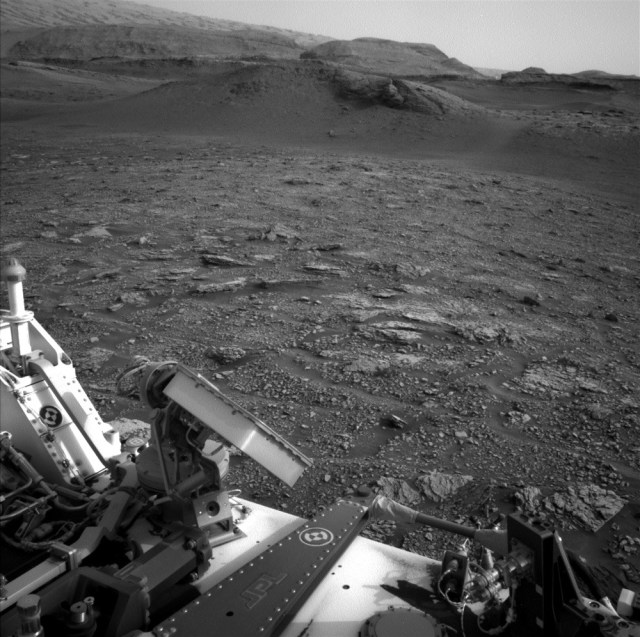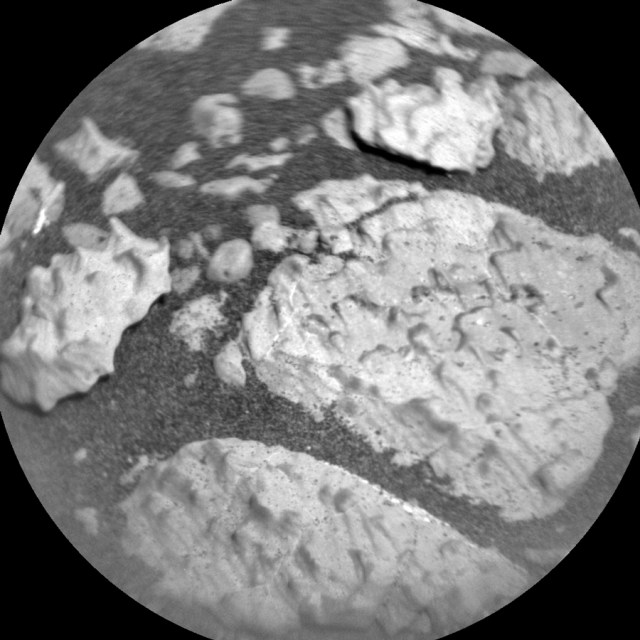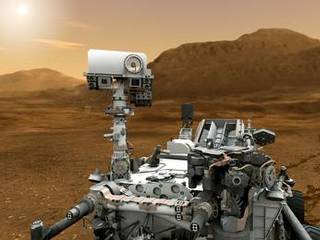
Capturing Detailed Scientific Data through Remote Imaging: A Day in the Life of an Astrobiology Mission.
Our science activities for today are varied and include capturing a 53-frame stereo mosaic with Mastcam of the fractured intermediate unit to the southeast. This will not only document our surroundings but also aid in planning our driving path after completing drilling at Mary Anning.
Following Mastcam’s work, ChemCam will use its laser on the target “Bishop’s Palace” to observe small-scale layering and potential diagenetic features. Additionally, ChemCam will use its Remote Micro Imager (RMI) to create a long-distance mosaic of the “Maybole” target, a layered outcrop on a nearby hill. Overlapping frames between the RMI and Mastcam mosaics were intentionally planned to ensure consistent lighting conditions for comparison.
Atmospheric monitoring activities with Navcam are also included in the plan. Later in the day, we will take a MARDI image to continue our change detection campaign at our current location. Overall, today’s plan is focused on capturing detailed scientific data through remote imaging technologies.

